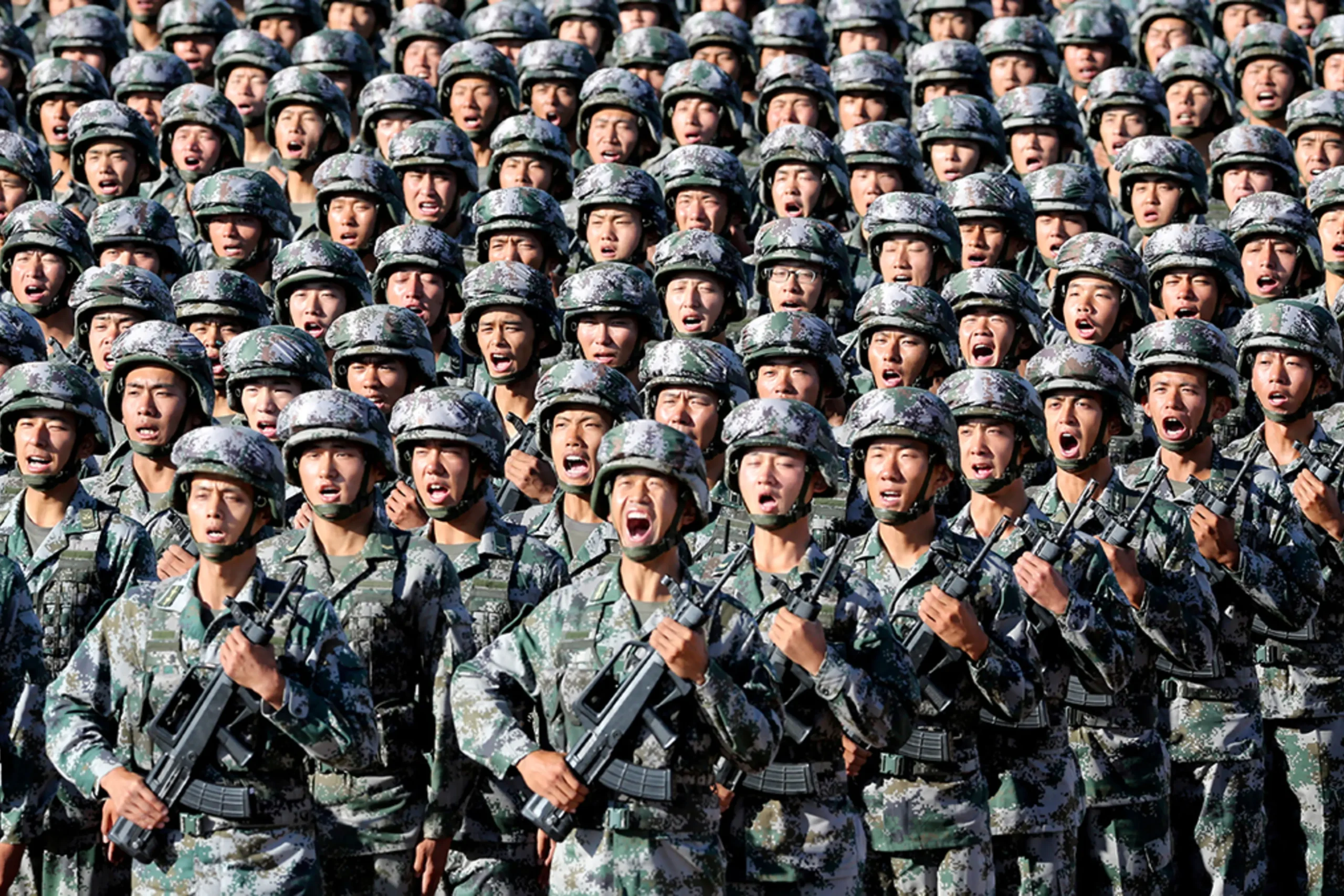A new Department of Defense report has issued stark warnings about China’s military expansion, describing it as the largest build-up of its kind since the rapid militarization of Nazi Germany in the 1930s. The report details a multi-pronged approach by Beijing to enhance its military capabilities while engaging in advanced psychological warfare tactics aimed at global “mind dominance.”
This unprecedented escalation has alarmed defense experts, who emphasize the potential ramifications for international stability and U.S. national security.
Unprecedented Military Expansion
China’s military modernization is advancing at a speed and scale that analysts say is unparalleled in modern history. According to the Pentagon, the People’s Liberation Army (PLA) has significantly increased its nuclear arsenal, expanded its naval fleet to become the world’s largest, and developed hypersonic missile technology capable of evading current defense systems.
The report indicates that China’s military capabilities are geared not only for regional dominance but also for global power projection. Specific developments include:
- Nuclear Arsenal Growth: China’s stockpile of nuclear warheads has reportedly surpassed 500, doubling its size in just a few years. The Pentagon estimates that Beijing aims to possess 1,500 nuclear warheads by 2035.
- Naval Fleet Expansion: With over 340 ships, China’s navy is now the largest in the world. Its focus on aircraft carriers, submarines, and advanced destroyers highlights its intent to challenge U.S. dominance in the Indo-Pacific.
- Advanced Missile Systems: Hypersonic missile technology, coupled with long-range precision strike capabilities, positions China as a formidable adversary in any future conflict.
“China is no longer just modernizing its military; it’s shaping it into a tool for global influence,” the report states.
Psychological Warfare and ‘Mind Dominance’
In addition to physical military enhancements, China has heavily invested in psychological operations designed to influence global perceptions and decision-making. The Pentagon report highlights Beijing’s use of artificial intelligence (AI), social media manipulation, and disinformation campaigns as tools to achieve “mind dominance.”
The strategy, rooted in Sun Tzu’s principles of warfare, seeks to win conflicts without direct confrontation by undermining the morale, unity, and decision-making capabilities of adversaries. Key components include:
- AI-Driven Propaganda: Beijing employs AI technologies to craft targeted propaganda, amplifying narratives that favor China’s global ambitions while sowing discord in rival nations.
- Disinformation Campaigns: Chinese state actors use social media platforms to spread false information, influence elections, and exacerbate social divisions, particularly in democratic nations.
- Cyber Warfare: In parallel, China has enhanced its cyber capabilities, aiming to disrupt critical infrastructure and communications in the event of conflict.
“The psychological dimension of China’s military strategy is as concerning as its physical build-up,” said a senior Pentagon official. “Their ability to manipulate perceptions on a global scale could have profound implications for future conflicts.”
Global Implications
The report underscores the significant challenges posed by China’s military expansion and psychological operations, particularly for the United States and its allies. The potential for conflict in the Taiwan Strait remains a focal point, with Beijing signaling its intent to reunify Taiwan with mainland China, by force if necessary.
Defense analysts warn that China’s military advancements could embolden its leadership to take aggressive actions in disputed territories, including the South China Sea and the Himalayas. Moreover, the combination of physical and psychological warfare strategies presents a multidimensional threat that complicates traditional approaches to deterrence and defense.
Calls for Action
The Pentagon has urged the U.S. and its allies to accelerate efforts to counter China’s growing influence. Recommendations include:
- Increased Military Investment: Strengthening U.S. and allied military capabilities to maintain a technological edge over China.
- Cybersecurity Enhancements: Developing robust defenses against cyberattacks and disinformation campaigns.
- Allied Cooperation: Deepening partnerships with nations in the Indo-Pacific region, including Japan, Australia, and India, to present a unified front against Chinese aggression.
- Public Awareness: Educating the public about China’s psychological warfare tactics to build resilience against disinformation.
“Countering China’s ambitions will require a comprehensive approach that goes beyond traditional military measures,” the report emphasizes.
China’s Response
Chinese officials have dismissed the Pentagon’s report, characterizing it as fearmongering aimed at justifying increased U.S. defense spending. A spokesperson for China’s Ministry of Foreign Affairs stated, “China’s military modernization is defensive in nature and poses no threat to any nation. The U.S. is fabricating threats to maintain its global hegemony.”
Despite these denials, Beijing’s actions, including aggressive maneuvers near Taiwan and militarization of artificial islands in the South China Sea, have reinforced concerns about its intentions.
A Growing Global Concern
As China’s military build-up continues, its implications extend far beyond the Indo-Pacific. The Pentagon’s report serves as a wake-up call for nations worldwide, highlighting the urgency of addressing both the physical and psychological dimensions of Beijing’s strategy.
While the full impact of China’s ambitions remains to be seen, one thing is clear: the stakes for global security have never been higher.
Sources:
- Pentagon report on China’s military build-up
- Fox News: Expert compares China’s build-up to Nazi Germany
- Reuters: U.S.-China relations and military tensions

